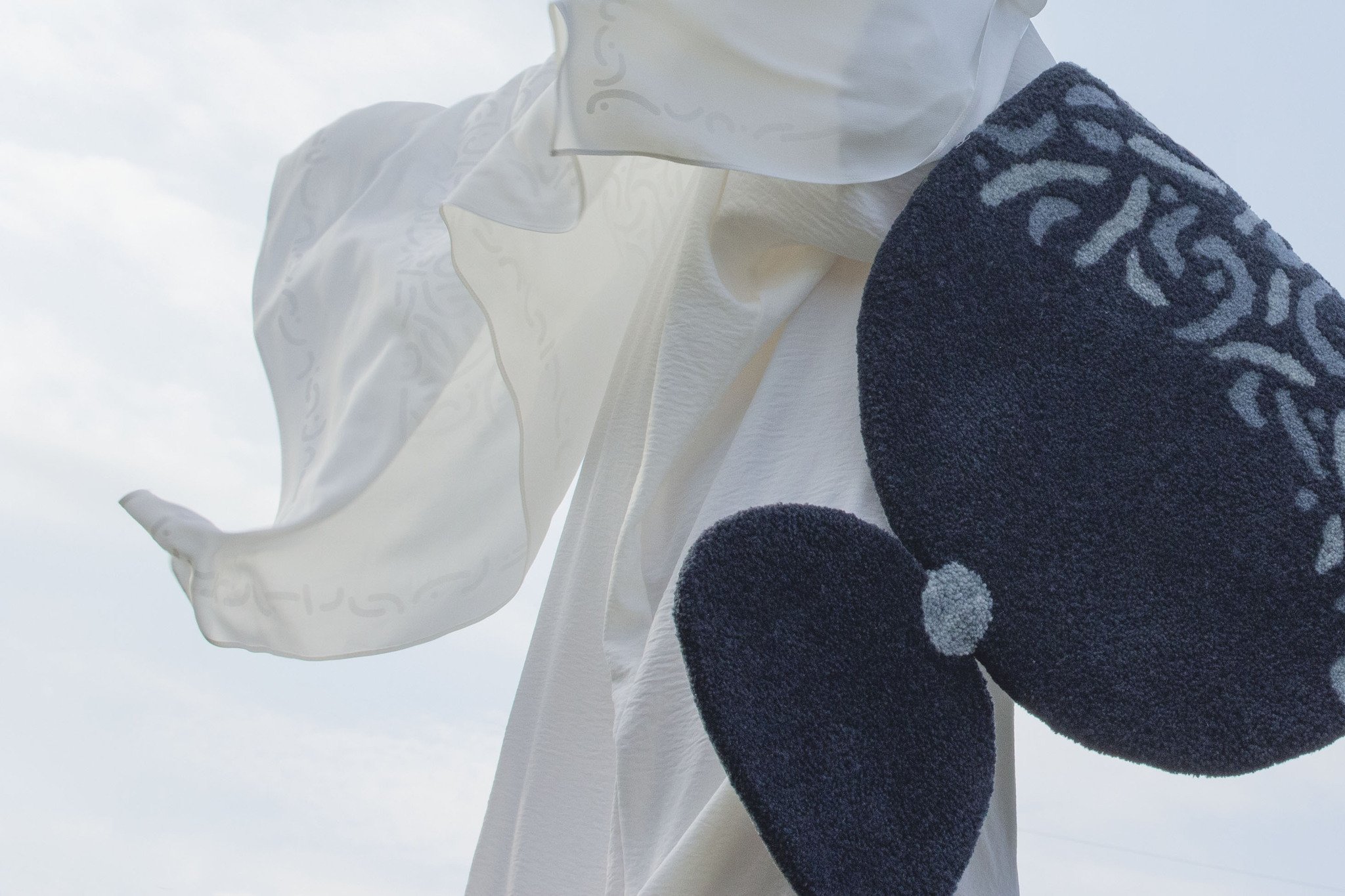
ISLAMIC TRADITION AND CONTEMPORARY PAINTING OF BOSNIA AND HERZEGOVINA
Author: Prof. Aida Abadžić Hodžić, PhD, full professor, Faculty of Philosophy of University of Sarajevo • Illustration: Seid Hasanefedić, A Great Marsh of Shahids, 1998

A significant number of modern and contemporary artists in Bosnia and Herzegovina have found an incentive and motifs in the rich treasury of Islamic art, which has been intensely present in architecture of cities, mosques, homes, in interior design, way of dressing, calligraphy, artistry of decorating books until the early 20th century. When they watched it, they did not literally only take motifs from it. Rather, it was an attempt to understand images of the world which was hidden behind these distinctive formative expressions and take over its measure, harmony and expressiveness.
A renowned professor of Zagreb Academy of Fine Arts and the youngest student in its history Omer Mujadžić (1903–1991) once said: “I have never painted abstractly because I could never paint anything more miraculous than a Persian rug.” His somewhat younger contemporary and student Behaudin Selmanović (1915–1972), who later also became one of the greatest modern painters of Bosnia and Herzegovina, studied Islamic miniature painting in the collection of Gazi Husrev-beg Library in Sarajevo with a great attention and admiration. He doubtlessly shared affinity for expressive line and powerful, intensive colors with old masters from Shiraz and Tabriz. Therefore, his painting seemed simple and stylized at the first glance. These were objects which “do not cast a shadow”, do not strive to imitate or compete with the greatness of God's creation. Deep inside, Behaudin nourished a though that Islamic art should always reflect the idea of tawhid – teaching about God's Oneness and Unity of Divine Being.
Both Omer Mujadžić and Behaudin Selmanović encountered Islamic culture and art as early as in the environment of their childhood: in Bosanska Gradiška (Mujadžić) and in Pljevlja (Selmanović). It was also the case with Salim Obralić, Safet Zec, Mersad Berber, Dževad Hozo, Seid Hasanefendić, Emir Dragulj – to mention just a few names among numerous artists of the 20th century.
It is interesting to trace how Behaudin used the modern, simple, symmetrical visual expression and primarily emphasized elements of visual form (drawing and color) to transform contents which he, as a boy, observed in the interior of his family house and of the Husein-pasha Mosque in Pljevlja. Motifs of the decoration of the mosque mihrab, mahfil and window frames, which are based on complex interweaving of geometric and stylized floral motifs often appeared on Behaudin's paintings. The powerful red, blue and yellow colors, which appear in the decoration of dome, stalactite decorations in mihrab, on geometric interweaving and floral motifs, were certainly a powerful impetus for Selmanović's persistence in work with natural pigments which he later produced himself, like old painters, to achieve the desired intensity and glow.
In his early cycle of prints devoted to Krajina Nišans from the mid-1960s, Dževad Hozo introduced completely new techniques and innovation, close to the poetics of then contemporary Art Informel, through procedures of multi-stage etching of a metal plate with acids to transfer, to the print, the impression of decay of stone and its patina over centuries. In anthropomorphic forms of nišans, another great painter of Bosnia and Herzegovina Seid Hasanefendić recognized the finest portrait of the man, a noble vertical resting upon the ground, as well as rising toward the beyond. Hasanefendić's Veliki marš šehida (A great marsh of shahids) is one of the most expressive paintings in the history of contemporary painting of Bosnia and Herzegovina.
Seid Hasanefendić - A great marsh of shahids, 1998
Remembering his father as a master with old tools, Salim Obralić used different techniques (drawing, painting, printmaking, installation) to remind of nobility, beauty and significance of crafts. In a series of woodcuts, Obralić translated both simple geometric forms and cheerful colors of rugs from his family home in Maglaj into the language of contemporary, analytical painting and took them to the border of abstraction. So enlarged and brought closer to the eye, the rugs spoke with primary beauty of their art, beyond their exclusively use value. In simple linear and rhomboid geometric forms which are regularly repeated on the rugs, Obralić unobtrusively underscored the beauty of rhythm and ornament in Islamic, dominantly non-figural art. The same is true of Bosnian sahans (plates), which preserved smells, sounds and warmth of family house, memory of the moments of joint meals in his parental home. Bosnian sahans were often engraved, ornamented, and this work was called savat, on the previously silvery tinned surface of a copper plate. Old sahans which he found in his parental home and on the attic of the house in Počitelj were covered with greenish patina which had, over time, woven amazing pictures. Salim enlarged the bottom of the plates as big, luxuriant graphic impressions, and he hung the copper discs in the nature, among trees; on the walls of old Bosnian fortified towns, among columns of Sarajevo Hanikah.
All these artists followed what was beautifully described by T.S. Eliot, i.e. that tradition can only be acquired by hard labor. Tradition, Eliot reminds, can be acquired by those who possess historical sense, while the historical sense requires not only the sense of pastness of the past but also of its presence. Therefore, these artists' encounter with tradition implied a long road of research, far away from mute simplifications and kitsch, which opened space for viewing what used to be in a fresh, contemporary and authentic way.
References:
Abadžić Hodžić, Aida, Krzović, Ibrahim, Salim Obralić, Bošnjački institut – Fondacija Adila Zulfikarpašića, Sarajevo, 2021.
Abadžić Hodžić, Aida, Behaudin Selmanović Selman, Bošnjački institut – Fondacija Adila Zulfikarpašića, Sarajevo, 2019.










